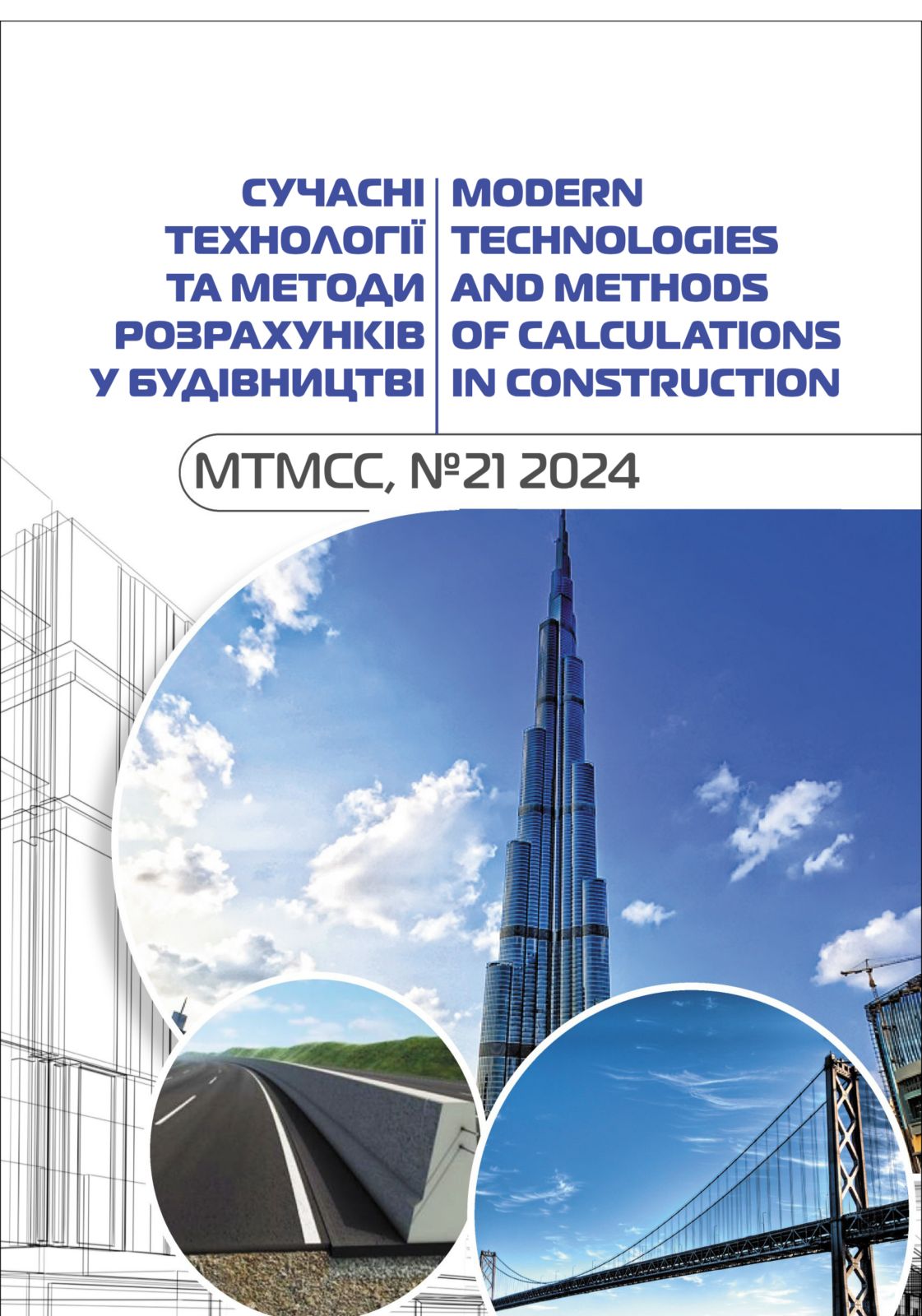Program of experimental research of limit state for bearing capacity Of reinforced concrete beams in inclined sections
Abstract
According to previously conducted research, the factors that affect the bearing capacity of reinforced concrete beams at inclined sections have been determined. In addition to the characteristics of the strength of concrete and reinforcement and the intensity of shear reinforcement, they include the distance from the support to the place of application of the load, the outline of a dangerous inclined crack, and the height of the compressed zone of concrete above it. The quantitative influence of the latter factors requires further research. The resistance of the wedge-shaped compressed zone depends on the inclination of the crack (angle of the wedge). To clarify the design schemes and dependencies for determining the resistance of the areas near the supports, testing of 6 reinforced concrete beams with the dimensions b x h(d) x l=120х190(160)х1500 mm is planned. Two series of samples were made. They differ in the step of the shear reinforcement in the sections near the supports: 100 mm і 150 mm. The distance of application of the concentrated force from the support varies: с = 225 mm, 300 mm, 400 mm і 500 mm; its relation to the arm of the pair of internal forces z changed in the interval c/z = 1,4 − 3,2. Shear reinforcement of beams is a bar of 6 mm diameter, class A240C; longitudinal reinforcement 2Ø20 A400C provides reserves of bearing capacity for normal cross-sections. It is envisaged to transfer the load to the test samples by two concentrated forces (according to the scheme of pure bending) in steps of each 10% of the expected value of the ultimate load. During the first test of the sample, external clamps are installed on the section from the support to the place of application of the load on one side of the beam. After the destruction of the unreinforced section, the clamps are transferred to it and the sample is retested. At each stage of loading, the strain value of the concrete of the compressed zone above the dangerous inclined crack and the shear reinforcement in the places where it intersects with the crack is measured by strain gauges with a base of 50 mm and 5 mm, respectively, the height of the compressed zone and the value of the angle of its wedge in the design (most dangerous) section are recorded.








